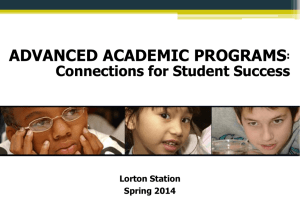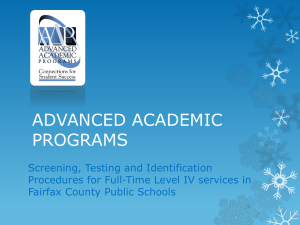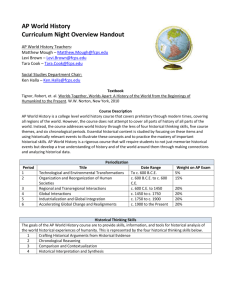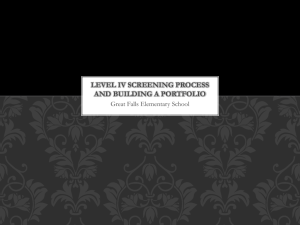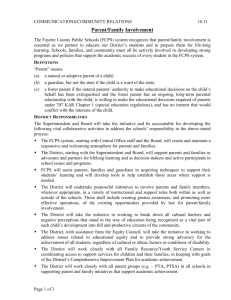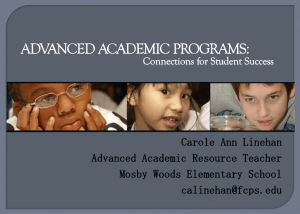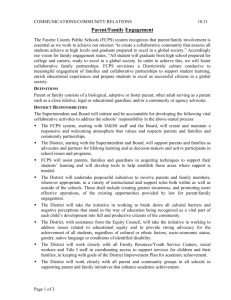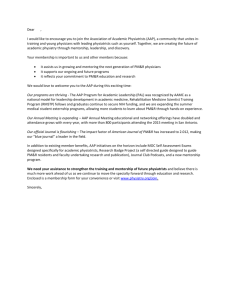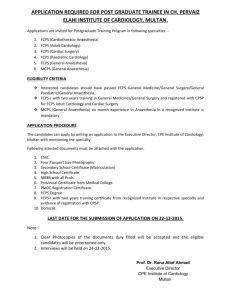GT Programs Parent Information Session
advertisement
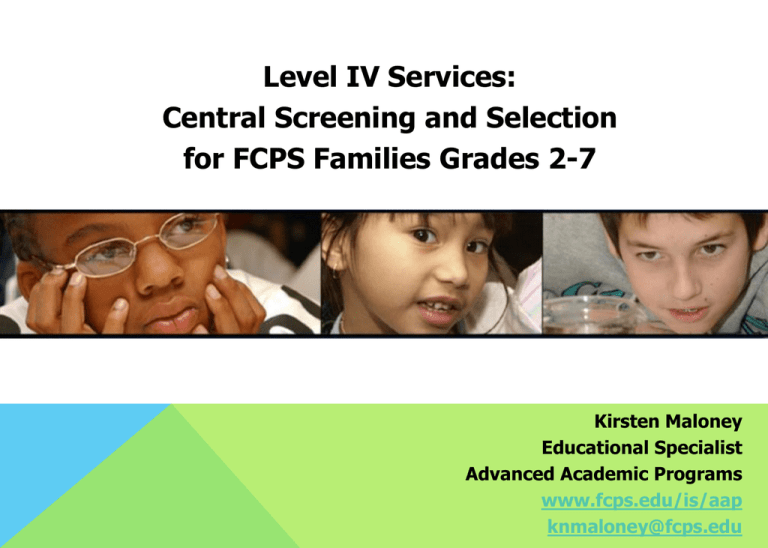
Level IV Services: Central Screening and Selection for FCPS Families Grades 2-7 Kirsten Maloney Educational Specialist Advanced Academic Programs www.fcps.edu/is/aap knmaloney@fcps.edu What is done in AAP? What goes into a Level IV screening file? What is the committee looking for in the work samples? What is the timeline for this process? Questions We Label Services, Not Children www.fcps.edu/i s/aap What do students do in Advanced Academic Programs? LEVEL I: CRITICAL AND CREATIVE THINKING SKILLS FOR ALL STUDENTS What does a screening file contain? BEST PRACTICES IN IDENTIFICATION Best practices indicate that multiple measures and valid indicators from multiple sources must be used to assess and serve gifted students. Information should be gathered from multiple sources, in different ways and in different contexts” —NAGC, 1997 SCREENING FILE CONTENTS 1- Summary Sheet 2- Referral Form 3- Gifted Behaviors Rating Scale with Commentary 4- Ability Test Results 5- Additional Optional Test Results 6- Progress Reports (1 ½ years) 7- Parent/Guardian Questionnaire (optional) 8- Student Work Samples 9- Awards, letters of recommendation (optional) SUMMARY FORM REFERRAL FORM ABILITY TESTING • FCPS Testing: NNAT from Grade 1 and CogAT from grade 2 • A parent/guardian may seek private testing through a licensed clinical psychologist or through GMU. • If GMU is not used, a copy of the licensed clinical psychologist’s license must be included with the test results. List of Approved Ability Tests Group Tests Individually Administered Tests Cognitive Abilities Test (CogAT) Stanford-Binet Intelligence Scale Naglieri Nonverbal Ability Test Wechsler Intelligence Scale for Children Otis-Lennon School Ability Test (OLSAT) (WISC IV) Cognitive Assessment System (CAS) Kaufman Assessment Battery Differential Ability Scale (DAS) GIFTED BEHAVIOR RATING SCALE 2e Learners: A student in grades K through 12 who demonstrate high performance ability or PARENT GUARDIAN academic potential and QUESTIONNAIRE who have a cognitive, physical, behavioral, or emotional disability that requires accommodations in order for their potential to be realized. What about work samples – who submits what? What is the committee looking for on the work samples? GUIDELINES Minimum 2 pages submitted by the school • 1 sample must be: a) The result of the student working with one of the 9 critical and creative thinking strategies –OR-b) The result of working with a resource from the AAP Curriculum Framework for levels II-IV (Clarion, M3, Jacob’s Ladder, Document Based Questions, etc.) The second sample may be: a) Another work sample related to critical and creative thinking or problem solving b) A writing sample c) Another sample showing student strengths The other four pages of work samples may be submitted by the school or by the parent. They should showcase student strengths in a variety of subject areas. • GUIDELINES (CONTINUED) Pages must be singlesided, 8 ½ x 11”. Pages must be 2dimensional only; However, a photograph of a 3D work sample is acceptable. Copies or originals are acceptable (work samples will not be returned) Multiple pages may be copied to one page as long as it is large enough to read. Or, a single page from a multi-page work sample may be included. It is helpful to write a brief sentence or two that highlights what the committee should notice about the sample MATH SAMPLE FROM MENTORING YOUNG MATHEMATICIANS (M2) nd This is from a 2 grade student. It utilizes math vocabulary related to the concept and shows understanding of the big idea. The student supports their answer with an example. MATH NON-SAMPLE While the 4th-grade student completing this sample scored perfectly, the work shows a rote process. This type of work is important, but does not showcase the type of problem solving thinking that would be good evidence for needing fulltime placement in a level IV center. Instead, showcasing a single problem that requires the student apply mathematics concepts to problem solve would be preferred. LANGUAGE ARTS: ENCAPSULATION This is an encapsulation of chapter 18 of the book Bud, Not Buddy, whereby the student put important ideas from the chapter on a license plate. This sample would be stronger if there was a short blurb pointing out that it was using the encapsulation strategy and verbalizing some of the symbolic ideas represented. LANGUAGE ARTS NON-SAMPLE This word study sample shows the student does well sorting words and using them in sentences. It is not a strong language arts sample. A stronger sample might include literary analysis, creativity, persuasive writing, etc. SOCIAL STUDIES: JOHNOGLYPHICS rd A 3 grade student created the following system, modeled on hieroglyphics, to teach toddlers to read. In addition to connections to Social Studies content, this work sample shows fluency and elaboration in an original solution to a problem. SOCIAL STUDIES NON-SAMPLE This sample shows the student is able to recall information about the 3 branches of government. A preferred work sample might include: analysis of a primary source document, relating to different points of view in past or current events, making intra- or inter-disciplinary connections related to Social Studies content, etc. OTHER WORK SAMPLES This student created a series of comic strips and designed a web site where they were posted. The comics and site showed a mature sense of humor in creating new products about every day topics. OTHER WORK SAMPLES This student created a poster of 4 Ways of Smart (Picture, Nature, Body, and Music). The poster displays a strong sense of design. OTHER WORK SAMPLES This student created a comic, entitled “Chocolate, ” with her spelling words for the week. What is the timeline for this process? STEPS FOR IDENTIFYING CHILDREN FOR LEVEL IV SERVICES FOR STUDENTS NOT ENROLLED IN FCPS Step 1 Second grade parents are notified of pool by end of January. Referrals for students grades 2-5 are due by Feb. 3 – submit to AART or administrator at local school. Optional materials are due for Pool or Referral students by Feb. 3. Submit to AART. Step 2 Central Selection Committee Meets Central selection for spring screening cycle is March 2015 Step 3 Eligibility Decisions are Mailed to Families at the end of April 2015 Reasons for decisions are not provided. If a student is ineligible, directions for appeals are included in the mailing. Step 4 Eligibility Letters will contain: Orientations for Eligible Students And Accepting Placement Date for Level IV orientation Form for accepting placement that is returned to the AAP office Form for accepting placement must be returned by May 18th. Step 5 Appeals are due May 29, 2015. New information must be provided in an appeal. Parents submit the appeal directly to the AAP office via U.S. Mail. Step 6 Appeals decisions are mailed by June 30. The decision of the appeals committee is final. www.fcps.edu/is/aap Section on FAQs may be particularly helpful. AART Name AART Email
